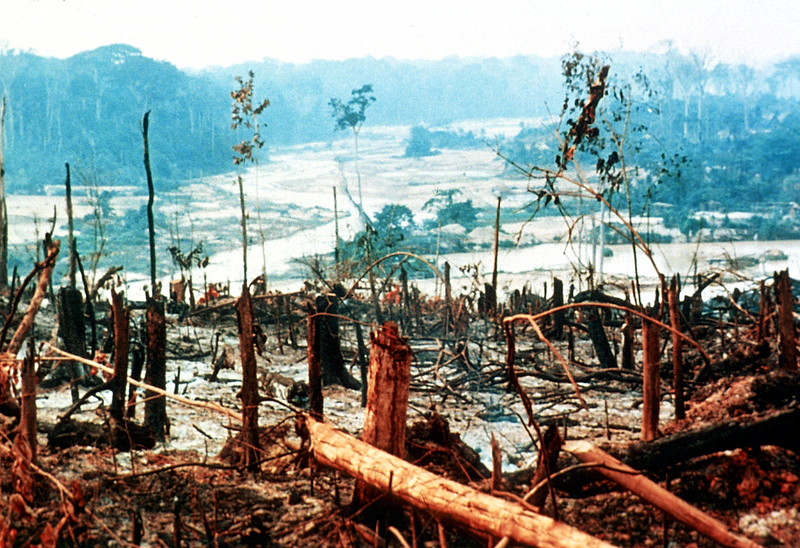“The solutions we conceive of as a global society,” a new report states, must “allow for interconnected ways of solving multiple problems at once.”
By Andrea Germanos, staff writer for Common Dreams. Published 9-8-2021

Amazon deforestation. Phpto: Oregon State University/flickr/CC
A slew of recent record-breaking disasters that took place in faraway places across the world shouldn’t be seen in isolation but as interconnected events for which human activity is a major root cause, according to a United Nations report released Wednesday.
The study (pdf), released by the UN University’s Institute for Environment and Human Security, took a “deep dive” into 10 extreme events that occurred in 2020 and 2021 that “were not only disastrous for people and the environment but were also the symptoms of underlying processes ingrained in our society.”
Such events include the Amazon wildfires, which were “fueled by global appetite”; Cyclone Amphan, which showed what happens “when a cyclone and a pandemic combine”; the Arctic heatwave, which was evidence of the world “spiraling into a climate disaster”; and the extinction of the Chinese Paddlefish—a “fish that survived the dinosaur extinction but not humankind.”
Joining the list was the Arctic heat wave in 2020, which the study directly links to the Texas cold wave. “Increasing temperatures in the Arctic influence the stability of the polar jet stream, a spinning mass of air above the North Pole, allowing cold air to move southward into North America,” researchers wrote.
“When people see disasters in the news, they often seem far away,” said UNU-EHS senior scientist Dr. Zita Sebesvari, a lead author of the new report. “But even disasters that occur thousands of kilometres apart are often related to one another and can have consequences for people living in distant places.”
The study singles out three categories of root causes most commonly linked to the analyzed events—greenhouse gas emissions, insufficient disaster risk management, and an undervaluing of the environmental costs of development and governance decisions.
Given the interconnection between the events and overlapping root causes, the report warns against “fragmented responses.” It also says the rapidly changing world means that “the past is no longer a reliable source in planning for future development or risk reduction.”
But a change in tack in dealing with extreme disasters is indeed urgent, the report says. “The window of opportunity is closing; while some impacts outlined in this report are irreversible, such as the extinction of the Chinese Paddlefish, others require swift intervention to avoid passing tipping points where long-term impacts can no longer be avoided.”
Behavior-influencing measures like “taxing fossil fuels could discourage the emitting of GHGs and enable the transition to climate neutrality,” the report states. More broadly, the publication calls for policymakers to pursue “win-win-win” solutions that harness interconnectivity “to reduce the severity of impacts cascading from disastrous events and therefore the emerging risks they contribute to.”
One such example is reducing deforestation, which would provide numerous benefits such as helping mitigate the climate emergency, protecting biodiversity, and reducing the spread of zoonotic diseases.
Inaction is a sure pathway to future disasters, the report warns.
“The failure to address interconnected root causes and emerging risks is accelerating the climate crisis, creating new and more intense extreme events, increasing societal vulnerabilities, and leading us to tipping points including mass extinctions and loss of ecosystem services,” the report states. “The solutions we conceive of as a global society must confront these systemic issues and allow for interconnected ways of solving multiple problems at once.”
“We must try to maximize risk reduction and adaptation benefits across multiple sectors,” the report adds, “and for different members of society locally and globally to avoid the rise of inequalities.”

